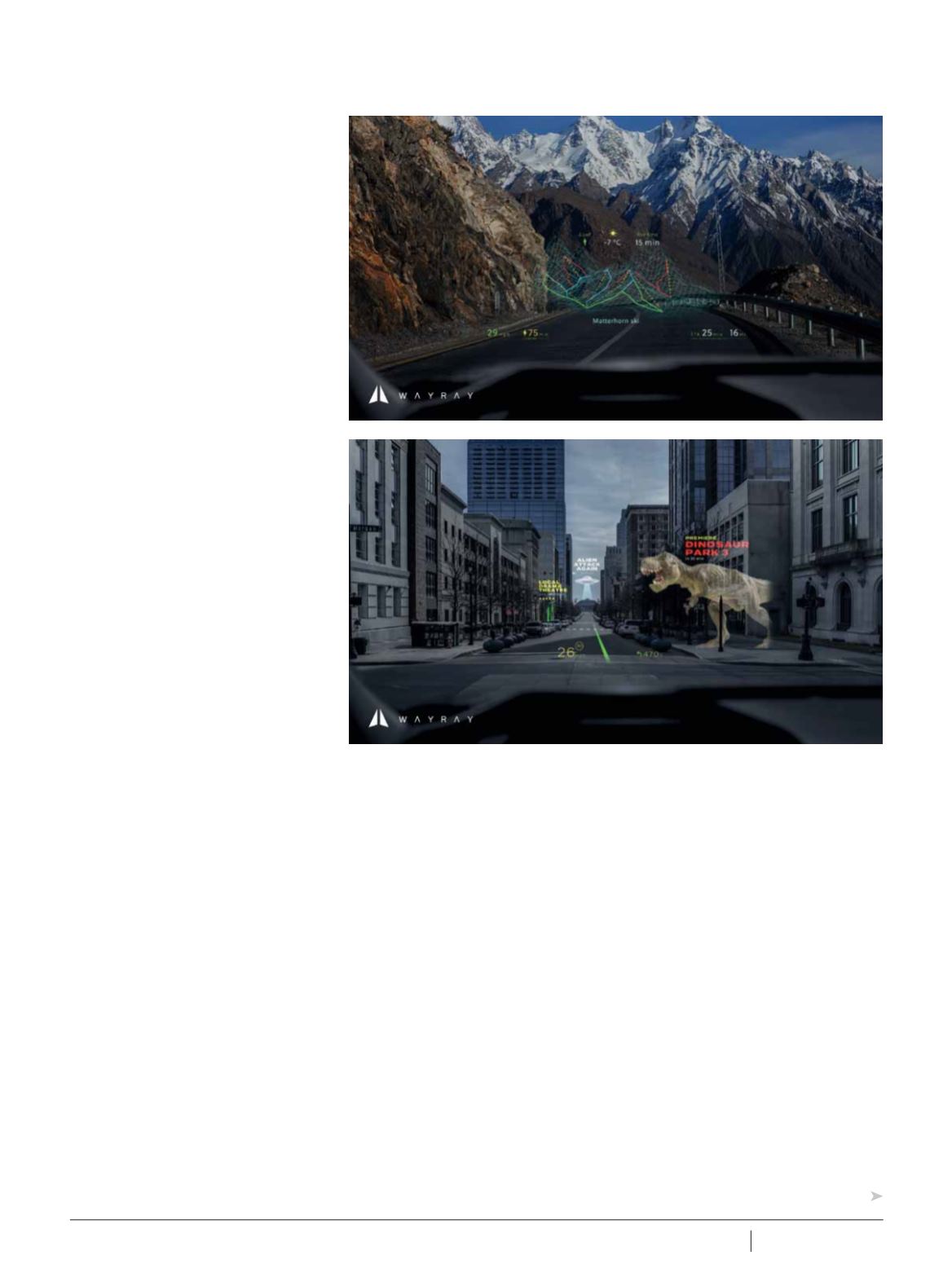

Spring 2019 ACROSS THE TRADES
5 7
traffic events encountered along the
driving route to be integrated into the
VR experience.
The aim is to have the system on the
market within the next three years using
standard VR glasses. To get there so
quickly, the German prestige car-maker,
through its Audi Electronics Venture
subsidiary, has co-founded a start-up
company, Holoride, which will look to
commercialise the technology via an
open platform made available to other
car-makers and content developers.
WAYRAY TO GO
Head-up displays (HUDs) are becoming
increasingly common on today’s new
vehicles in Australia, projecting useful
information such as vehicle speed and
traffic sign information onto a small
portion of the windscreen.
They work well in keeping the driver’s
eyes on the road, but the technology
is really cranking up, as demonstrated
Hyundai Motor Group and Swiss deep-
tech start-up WayRay which brought to
CES what is billed as the world’s first
holographic augmented reality (AR)
navigation system.
Equipped in a Genesis G80 luxury
sedan, this next-generation visual tech
takes the in-car experience to the next
level. While conventional HUD units
project a reflected image indirectly
through an LCD screen mounted on
the dash, the holographic AR display
projects a stereoscopic image through
the windscreen, displaying it on the
actual road.
There’s no headset or earpiece
involved, and the images and
information are constantly adjusted
in real time according to vehicle speed
and the driver’s viewing angle. The
virtual image measures 1,310mm high
and 3,152mm wide and is projected at a
distance of 15m from the driver’s eyes.
What’s more, the level of detail here
is quite stunning, with the technology
already sophisticated enough to not
only show navigational features such as
current speed and destination points,
but incorporate advanced driver-
assist features and alert the driver to
oncoming hazards.
Hyundai is among several global
investors in WayRay – Porsche is
another – and expects annual growth to
the tune of 30% in the holographic AR
display sector.
The tech will also soon be able to
display pedestrians, objects, buses,
bike lanes and footpaths, while the
major players expect the incorporation
of V2X technology and connectivity
features will allow data such as
traffic signals, surrounding vehicle
information and road and weather
information to be built into the system,
all provided in real time.
Traditional automotive is just the
tip of the iceberg as WayRay works
on AR concepts across land, air and
water transportation, spanning safety,
navigation and infotainment streams.
It also recently launched a True AR
Software Development Kit that allows
third-party developers to integrate
virtual objects into the real world,
creating new applications that run on its
holographic AR displays.
Given that glass is such a big
component of our smart cars, buildings
and cities, the opportunities for this
emerging tech look to be huge – and the
possibilities endless.
KIA READS THE MOOD
Hyundai’s sister brand Kia also
attracted plenty of attention at CES
as the Korean car-maker looked
ahead to a time – not all that far away,
depending on who you believe – when
fully autonomous driving becomes the
norm and new forms of technology
Hyundai Motor Group and Swiss deep-tech start-up WayRay brought to
CES what is billed as the world’s first holographic augmented reality (AR)
navigation system.
















